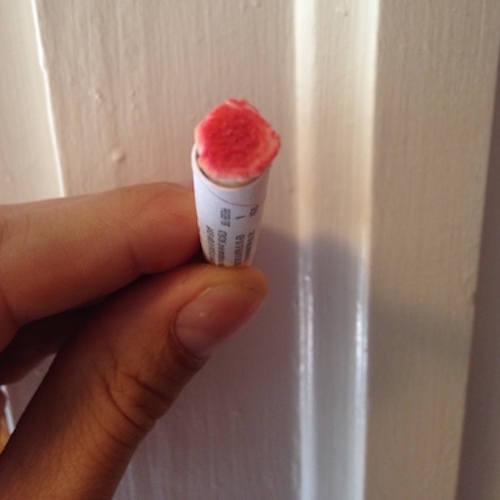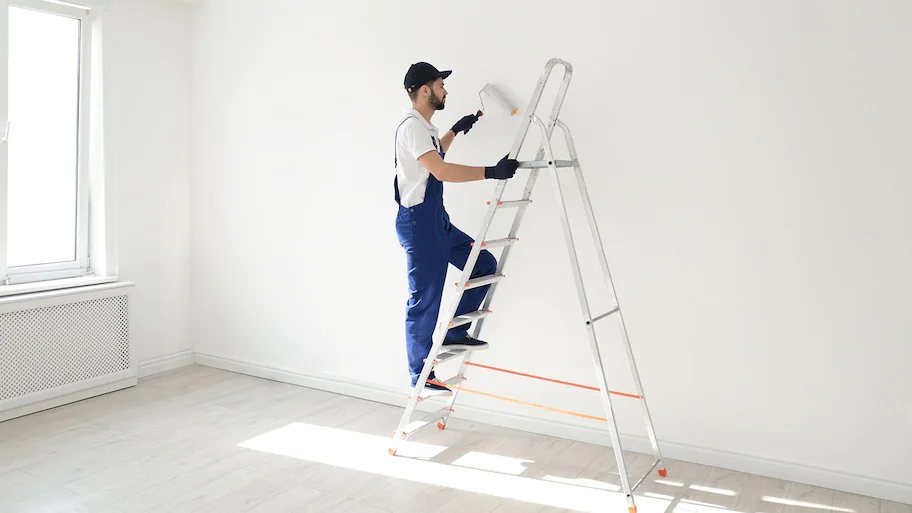Keep yourself protected from the hidden hazards of painting! Here are some home painting safety tips we believe every homeowner should be aware of to keep themselves safe.
Although this guide will help you paint your house safely, finding a pro painter for home painting services is better since they can get the job done quicker and safer.
Test for Lead
Lead was originally used in paint to enhance color, boost durability, and speed up drying time. However, the lead in paint rendered paint dust and paint chips dangerous. Lead poisoning can have a wide range of negative health consequences.
Lead-based paints were banned from use in residential construction in 1978, so if you’re planning a painting project in a home constructed before 1978, make sure to test for lead before sanding or scraping. Lead testing kits are widely accessible in home improvement and hardware stores.

Volatile organic compounds are included in several regularly used painting materials (VOC). At room temperature, these chemicals evaporate, producing gases that might cause fire hazards and health issues. Look for some products with low VOC content to reduce your risk.
If you have oil-based stain, paint thinner, paint stripper, or other flammable chemicals, keep them in their original containers with tight-fitting covers or lids.
Add Ventilation When Painting
Patching and sanding are common tasks in painting jobs, which generate dust. Even the most innocuous water-based paint emits a significant amount of vapor when it dries. One of the home painting safety tips we can give is to provide additional ventilation while painting inside.

The simplest method is to place a box fan in your window and blow it out. Then, on the opposite side of the room, open a door or window to produce cross ventilation.
Buy Top-Quality Dust Masks
When sanding, dust is one of the dangerous painting work hazards, so you always need to use a dust mask to protect your lungs. Some low-cost dust masks don’t seal adequately and will let particles into your lungs.
One of the important home painting safety tips is ensuring that the masks have the N95 certification when shopping for masks. Then, seek masks with a foam nose seal and durable elastic straps. Masks are important for house painting safety equipment.

One of The Most Crucial Home Painting Safety tips is Wearing an Organic Vapor Respirator.
Dust masks are effective at keeping dust and other particles out of your lungs, but they do not filter out VOCs, which can harm your lungs, brain, and other organs.
For this, you’ll need a respirator that can be supplied with organic vapor cartridges. Wear an organic vapor respirator when dealing with spray paint, organic-solvent-based stain sealers, lacquer, or other “smelly” painting or cleaning chemicals.

Note: If you want to spray paint your home interior or exteriors, for better safety and results, it is better to contact professionals for spray painting services.
If you’re unsure, check the label on the material to determine if a respirator is required. Make sure the cartridge type matches the chemical kind you’re using. This information may be found on the label. Follow all of the directions for appropriate use and filter replacement carefully.
One of The Lesser Considered Home Painting Safety Tips is to use Ladders Safely.
You may prevent accidents by practicing proper ladder safety. Begin by reading and according to the instructions that came with your ladder. Then, go online and look up “ladder safety.” Begin with these extension ladder safety recommendations and procedures.

Cover Your Hands With Gloves
Some solvents used in painting and peeling paint might penetrate your skin and harm your nerves or organs. They can, of course, inflict more acute injury to the skin. You should maintain a supply of gloves on hand for these reasons.
For jobs like staining and varnishing, disposable latex, vinyl, or nitrile gloves are ideal. Thick chemical-resistant gloves are preferable for working with powerful solvents such as paint thinner, lacquer thinner, acetone, or paint strippers. Check the glove’s label to ensure it’s resistant to the chemicals you employ.

Be Careful With Paint Stripper
When scraping and sanding fails and you need to get to the bare wood for the best paint finish, paint strippers come in handy. There are various paint strippers, some of which are safer than others. However, the safety advice is the same regardless of whatever type you choose.
One of the important home painting safety tips is to wear safety goggles to shield your eyes and chemical-resistant gloves to shield your hands and wrists while working in a well-ventilated location or preferably outdoors if possible.

Dispose of Oily Rags Safely
Be cautious if you intend to apply an oil finish with a cloth. Bundled-up greasy rags can catch fire without being lit up in the right conditions.
This is known as spontaneous combustion, a leading cause of fires. One of the important home painting safety tips we can offer is never to leave any greasy rags stacked up. When you’re finished with an oily cloth, lay it flat to dry.

When the oil has dried, the cloth may be discarded. Remember that greasy rags are only one type of possible fire danger.
If you want to find a reliable painting expert but don’t know who you can trust, you can check these tips for hiring a painter.

